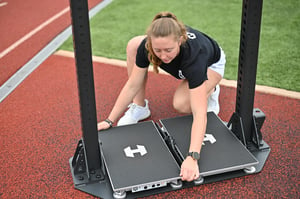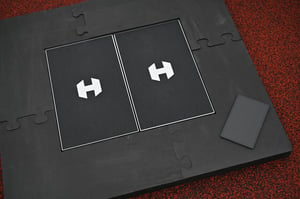
ISOMETRIC
(ISO)
ISO TEST TYPES
The Isometric Test Type can be customized by creating and applying a TAG. Below are common Isometric tags.
TOUCH
Isometric Mid thigh pull (imtp)
Isometric Mid thigh pull (imtp)
TOUCH
Isometric belt squat
Isometric belt squat
TOUCH
Isometric back squat
Isometric back squat
TOUCH
Isometric trap bar
Isometric trap bar
TOUCH
Isometric calf / soleus
Isometric calf / soleus
Service Description
TOUCH
isometric hamstring
isometric hamstring
Service Description
TOUCH
Ash test (upper body)
Ash test (upper body)
Service Description
ISOMETRIC VIDEO LIBRARY
HOW TO VIDEO
The Isometric Mid-Thigh Pull is the most commonly used test for isometric strength. It is essential to have a proper setup to execute this test correctly. There should be no slack on the bar before the test begins and upon starting the test (after 1 second of quiet), the athlete should PUSH into the ground as hard as they can while maintaining a firm grip on the bar.
SEATED SOLEUS ISOMETRIC TEST
There are many variations of the isometric test protocol. In this example, the athlete is testing soleus strength by using the bar as a brace against their thigh and using a chair to set up the positioning and angles.
ISOMETRIC BELT SQUAT TEST
The iso belt squat is another common variation on the standard isometric testing protocol. This requires a special setup where a chain or strap can be connected to the floor between your force plates. This test relieves stress on the back and results in higher isometric force output as the upper body is no longer involved.
ISOMETRIC ANKLE PUSH
Another variation involves using the bar as a back-squat brace. This variation is single-leg and uses a standard squat rack (using a tag for each variation is necessary to avoid data errors in your aggregations).
ASH TEST BLOGS
The ASH Test is capable of detecting bilateral shoulder strength adaptations commonly observed in other clinical tests. This assessment is especially useful for overhead athletes. Read the blogs below to determine which arm positions are best for you.
Top Isometric Research Papers:
-
McCall et al (2015) Reliability and Sensitivity of a Simple Isometric Posterior Lower Limb Muscle Test in Professional Football Players
-
Brady et al. (2017) A Comparison of the Isometric Mid-Thigh Pull and Isometric Squat: Intraday Reliability, Usefulness and the Magnitude of Difference Between Tests
-
Comfort et al. (2019) Standardization and Methodological Considerations for the Isometric Midthigh Pull
-
Stone et al. (2019) Using the Isometric Midthigh Pull in the Monitoring of Weightlifters - 25+ Years of Experience

-2.png?width=200&height=77&name=Hawkin%20Logo%20(2)-2.png)
-1.png?width=155&height=60&name=WHITE.Horizontal_Logo.Transparent%20(3)-1.png)